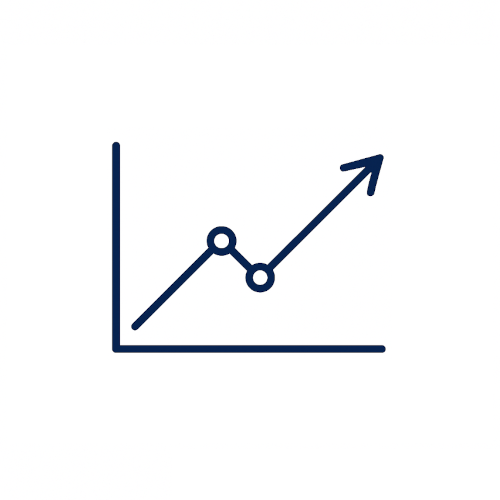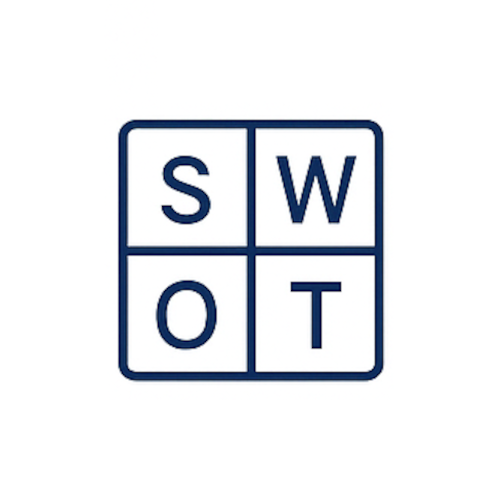
For any company, knowing its competitive landscape is important for its development and growth. Market positioning highlights the company’s unique selling points and direction, helping everyone understand its strategy. This involves looking at competitors and understanding factors that affect customer choices and the company’s place in the market. Understanding what makes a company stand out is crucial for making informed decisions. Let’s explore this further.
What is the Competitive Landscape?
The competitive landscape represents the environment in which an organization competes. It consists of the organization’s key competitors as well as the specific factors on which they compete, such as product variety, product quality, price, and more.
Who Are Competitors?
Competitors are other organizations that offer similar services to the same customer segments. Therefore, the intended customer segments have a choice between the organization and its competitors.
What is Competitive Analysis?
Competitive analysis is the practice of assessing the strengths, weaknesses, relative offering types, and offering levels of an organization’s competitors. The goal is to understand how the organization ranks in comparison to them.
An important concept in competitive analysis is the competing factor. A competing factor is a specific attribute that may interest a potential customer when choosing between one organization and a competitor. For example, Price would be a competing factor because potential customers often consider price when choosing among organizations offering the same service.
The identification of competing factors and the relative offering levels provided by an organization and its competitors are vital components of strategic planning. They help determine how an organization wishes to position itself in the market relative to its competition.
Based on the value propositions defined in the Business Model Canvas, some of these value propositions can be seen as competing factors. Besides value propositions, other factors can be considered competing factors, such as price or things that the organization does not provide (and are not part of the organization’s value propositions), but are offered by competitors. For instance, an online SaaS organization may choose not to provide a mobile app as a channel for its customers to access its services, opting for a web-based channel only. In this case, “Mobile app” would not be a value proposition for this organization. However, “Mobile app” can still be a competing factor if competitors provide it, as potential customers might choose between the organization and its competitors based on the availability of a mobile app.
Examples of Competing Factors:
Mobile app – the organization and its competitors may or may not offer a mobile app. Those that do may emphasize it differently, with some investing less in Mobile App features than others.
Price – the organization and its competitors might offer their services at different prices.
Third-party integrations – the organization and its competitors might choose to invest differently in the number of third-party integrations they support and how seamless these integrations are from the customer’s perspective.
The offering level for individual competing factors is ranked from 0 to 5 for the organization and each of its competitors. A ranking of 0 means that a specific player does not prioritize this factor at all, while a ranking of 5 means that it’s a strategic differentiator for them, and they actively invest in it. In other words, 0 signifies no focus, and 5 signifies maximum focus on a specific competitive factor.
Competing factors are evaluated from the perspective of potential customers. For instance, regarding price – 0 means that the organization puts less emphasis on keeping the price low (they are fine with being more expensive than the competition), while 5 means that the organization is putting maximum focus on keeping the price low (they strive to be cheaper than the competition).
Competitive analysis can be performed based on the current state of the organization to showcase how the organization ranks on various competing factors relative to its competitors. However, from a strategic perspective, competitive analysis should be performed based on the strategic approach, which reflects the intended future state of the organization. If the strategic approach involves “price differentiation,” then “price” should receive a high ranking as a competing factor, despite the organization not currently offering the lowest price. In other words, if the organization strategically aims to lower prices and focuses on that goal, price should receive a high ranking relative to its competitors, who do not prioritize lowering prices but instead focus on providing a more sophisticated service.
All competitive factors are ranked relative to the competitors, not in absolute terms.
It’s essential that the organization’s strategy is consistent, meaning that drivers, strategic pillars, and intended offering levels across all competing factors must be in agreement. For example, if an organization chooses to differentiate through product quality, the number of features, and third-party integrations, this should be reflected in the emphasis they place on the relevant competing factors. It should not be surprising if the organization is more expensive and ranks lower on the price competing factor.
What is the Strategic Profile?
The strategic profile is a chart that visually displays the relative strategic focus placed across the set of competing factors by the organization and its competitors. It serves as a visual representation of the competitive landscape.
The strategic profile has two views:
- Competitors: This view displays all players (the organization and its competitors) on the same chart with their relative strategic focus across different competing factors. This view enables discreet comparisons between individual competitors in the market.
- Industry: This view averages all competitor offering levels grouped by competing factors and shows the organization separately from its competitors. At a glance, the organization can assess how its strategic profile differs from the industry average.
Conclusion
By analyzing competitors, identifying their completing factors, and positioning themselves strategically, organizations can better manage and work toward their goals. Competitive analysis involves evaluating different competitive elements, assigning them value, and placing them within the context of customer preferences and decision-making.
A strategic profile, which shows how an organization’s strategy compares to its competitors, helps ensure alignment. This tool allows organizations to see if their strategy matches their market position and whether they stand out or not.
Since the competitive landscape is dynamic, continuous evaluation and ability to pivot and adapt are extremely important. By understanding and adapting to these changes, organizations can differentiate themselves and stay responsive.












